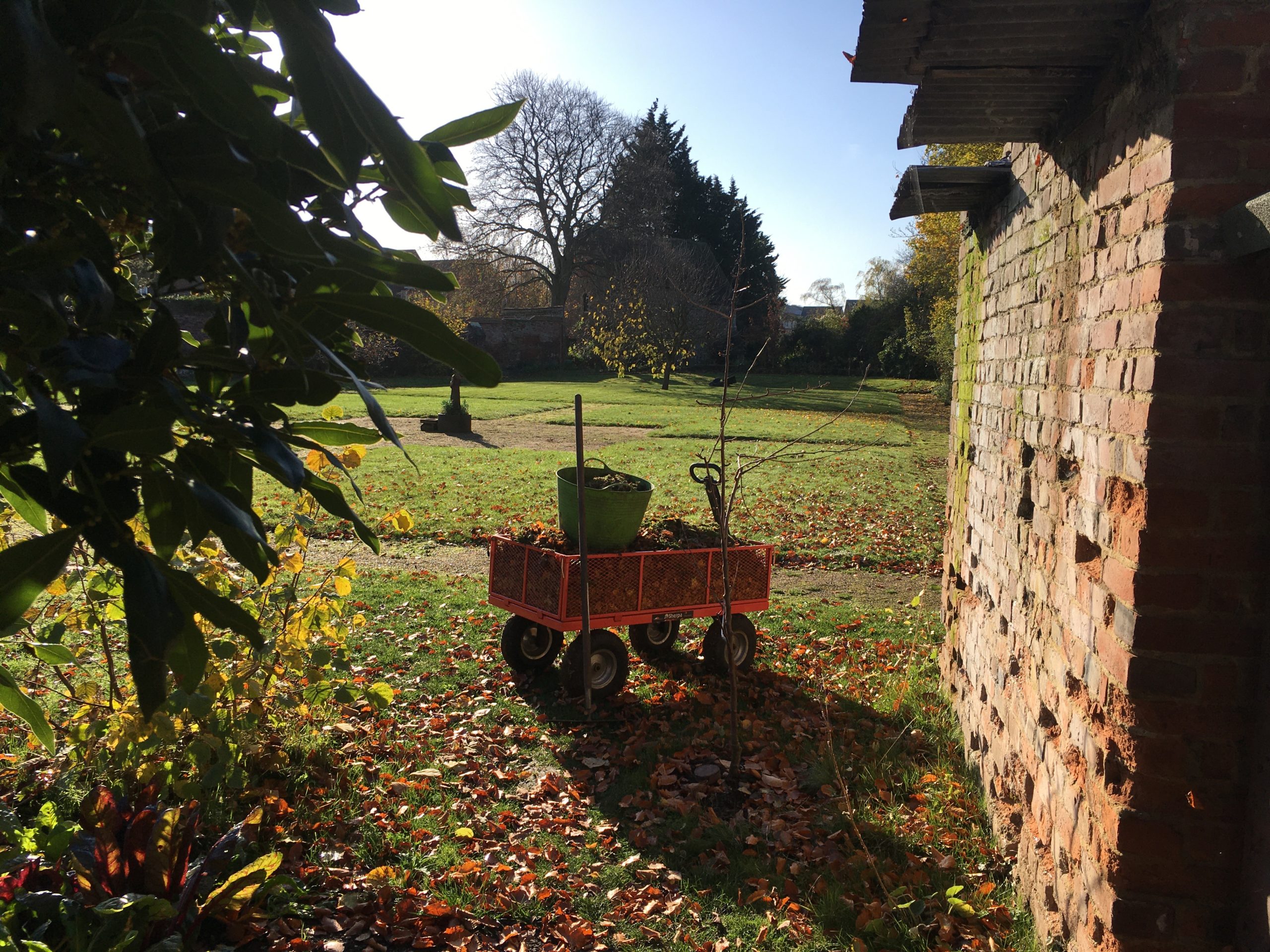Some important seasonal jobs have been completed in the past couple of weeks that have been on the “to do” list for a while. November is the best time to plant – whether it’s dividing and moving established plants to new places or putting in new bare root plants. The soil in November is still workable and not yet waterlogged so whilst the plants above ground are dormant in the winter, their roots can get settled and established below ground ready for the surge of new growth come spring.
We spent a couple of days transforming the border under the wisteria, by removing and relocating irises, valerian and rhubarb (!) and digging out all the alkanet. This left us with a fairly blank canvas, punctuated only by clumps of campanula medium (Canterbury Bells) viola odorata (wild violets) and cyclamen hederifolium (Autumn flowering cyclamen) which we wanted to retain. The rampant alchemilla mollis (Lady’s Mantle) has smothered parts of the riverside border opposite and so clumps of it were dig up and carefully prised apart to get lots of small, healthy plants with decent roots. This not only makes breathing space for the riverside border but also provided free plants for under the wisteria. Likewise we were able to dig out several young Athyrium filix femina (Lady Fern) to transplant opposite as well. Along with a few acanthus mollis (Bear’s Breeches) grown on in the Cutting Garden and bulbs of gladiolus communis byzantinus (Eastern Gladioli) to give height, the border beneath the wisteria is now planted much more sympathetically to mirror the riverside border opposite.
We also planted 25 metres of mixed bare root rosa rugosa rubra (Pink Ramanas Rose) and Carpinus betulus (hornbeam) along the fence line between the Cutting Garden and Assisi Cottage. This will grow and spread into a colourful hedge over the next few years.
As well as planting we have been harvesting an unusual “crop”. The giant bamboo in the Master’s Lodge garden has been encroaching on the entrance path and shading out the beech hedging. It is so well established that it is practically impossible to dig out the tough thick root runners without the help of machinery, so we simply sawed off the stems at ground level, removing about a third of the total stems. It has made an enormous difference to the view along the entrance path and will allow the beech and the neighbouring holly much more light and space to flourish. We employed the same technique with the smaller bamboo patch in the meadow, taking it back from the path. As the bamboo shoots regrow we will simply keep cutting them down to ground level which, without the help of pandas, is the easiest way to manage its spread. All the stems we have cut will not be wasted. The leaves will be stripped off and they will be cut to suitable lengths for us to use as plant supports and home-made trellis panels in the garden.

